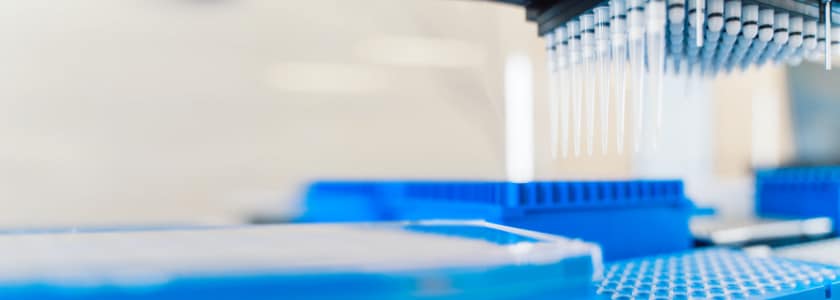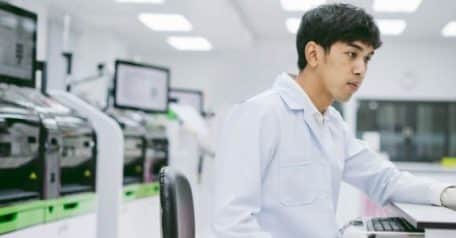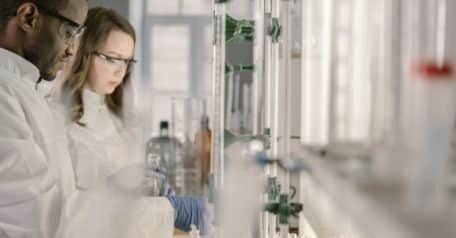Automation is suddenly popping up everywhere—you are likely seeing it used in everything from health and medicine to law enforcement, agriculture, and transportation.
There are plenty of good reasons why this is happening. Automation can help to save time and money, increase the accuracy of decision making, reduce risk, and empower workers. It should be no surprise then that IDT is harnessing the power of automation to benefit our customers. Recently, Francesco Criscuolo, an automation specialist at IDT, talked about automation and its benefits to biotech.
Q: How is automation changing the industry?
A: Automation is changing the biotech industry by freeing up manual labor bandwidth and allowing for increased throughput and sample processing.
Over the past few years, I’ve seen an increase in the adoption of liquid handling systems and automated workflows. This is due, in part, to the global issues that arose in 2020 with the spread of SARS-CoV-2. Research surrounding this virus spurred the testing of multiple sample types at a rapid pace, including clinical samples such as nasal swabs, other respiratory secretions, cerebrospinal fluid, and stool as well as other sample types such as wastewater to monitor viral shedding within communities.
Many labs resorted to staggered labor shifts as a precaution while automation helped out by acting as another pair of hands to augment the in-lab workforce.
Q: How does IDT facilitate automation for our customers?
A: IDT facilitates automation for our customers by providing them assistance in whatever capacity they need. Some customers don’t have the bandwidth or resources to prepare protocols and/or test them, so IDT can develop the protocols and help the customers test the workflow.
At the other end of the spectrum, there are customers who have prepared workflow scripts themselves, but they’d like guidance regarding the optimization of the protocol or troubleshooting the current setup, in which case, we can assist in these situations also.
IDT has excellent relationships with many of the platform vendors on the market and has co-developed and collaborated on many projects. If the customer is currently working with a vendor and needs assistance, IDT is able to join the conversation and collaborate on the project.
Q: What are some of the benefits of automation?
A: Automation in life sciences is an up-front time investment, but the advantages afterward justify the work, especially if it is for a workflow that is going to be performed regularly. Benefits include a reproducibility in results, less risk for error, removing nearly all human error, reducing hands-on manual labor, providing consistent processing, and in some instances increasing turn-around-time.
The reduction of hands-on manual labor is a great advantage alone because it allows scientists to perform other duties such as developing new workflows in the lab, analyzing data, and working on presentations or publications as opposed to performing an assay at the lab bench.
Q: Isn’t it true that automation is only for large customers?
A: In the past, this may have been true with some of the larger and complex systems that were and still are on the market. However, in recent years, automation companies new and old have begun developing platforms that are smaller, more compact, and more affordable compared to the complex systems. This makes these instruments more accessible to smaller laboratories in both the clinical and academic spaces. The recent trend has been the development of these instruments with a smaller footprint, typically accommodated on a bench top, with walk-away capability.
Q: How can IDT’s automation tools plug into a customer’s existing workflow?
A: The automation tools plug in seamlessly to a customer’s workflow. Prior to starting a project for a customer, we learn about the nature of the project and its scope. Part of this process is learning about the customer’s system setup as well as other accessories and consumables they have available to them. This is so that, when creating the workflow, we can do our best to use the toolbox and tools that the customer has available to them rather than having the customer purchase other components. In some cases, this may be necessary to automate the workflow so that it is sufficient from a chemistry performance perspective.
Q: What are some of the benefits of IDT’s automation services?
A: IDT’s automation services have quite a few benefits to our customer base. We have an array of customers using our products. Some customers are new to automation, some use it on occasion, and others are experts. Experience levels aside, we have a very knowledgeable automation team that can help customers in varying capacities, whether they need a protocol written for them, guidance on a section of the workflow, or troubleshooting automation runs and performance. We offer assistance from both the chemistry perspective as well as adapting movements and practices to the automation platforms. Each system has its own capabilities, so we also take that into account.
Q: Where is automation headed in the biotech industry—and what can we look forward to next?
A: The answer to this has recently changed. If this came up last year, the answer would have been miniaturization of reaction sizes. While this is still a direction that some are headed in, but as of late, I’ve seen the miniaturization of robots as opposed to chemistry.
There have been many automations launches over the past year, and more to come, where companies are releasing smaller, closed box instruments. The throughput can be somewhat smaller, but the idea here is that the liquid handlers are enclosed and involve little end-user involvement or intervention with a push-button run initiation and walk-away workflow. The smaller instruments are more affordable compared to the larger more complex setups, but they are also more easily adopted, and, in my opinion, this is due to these options being less intimidating to new users. For research use only. Not for use in diagnostic procedures. Unless otherwise agreed to in writing, IDT does not intend these products to be used in clinical applications and does not warrant their fitness or suitability for any clinical diagnostic use. Purchaser is solely responsible for all decisions regarding the use of these products and any associated regulatory or legal obligations.

























